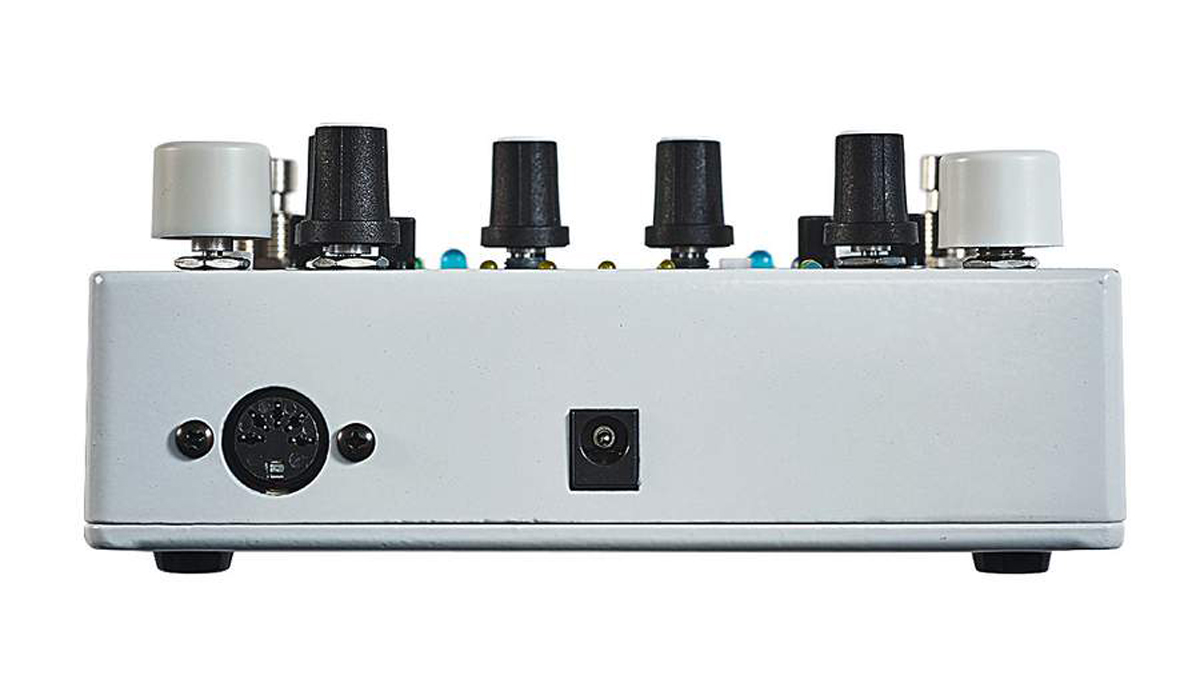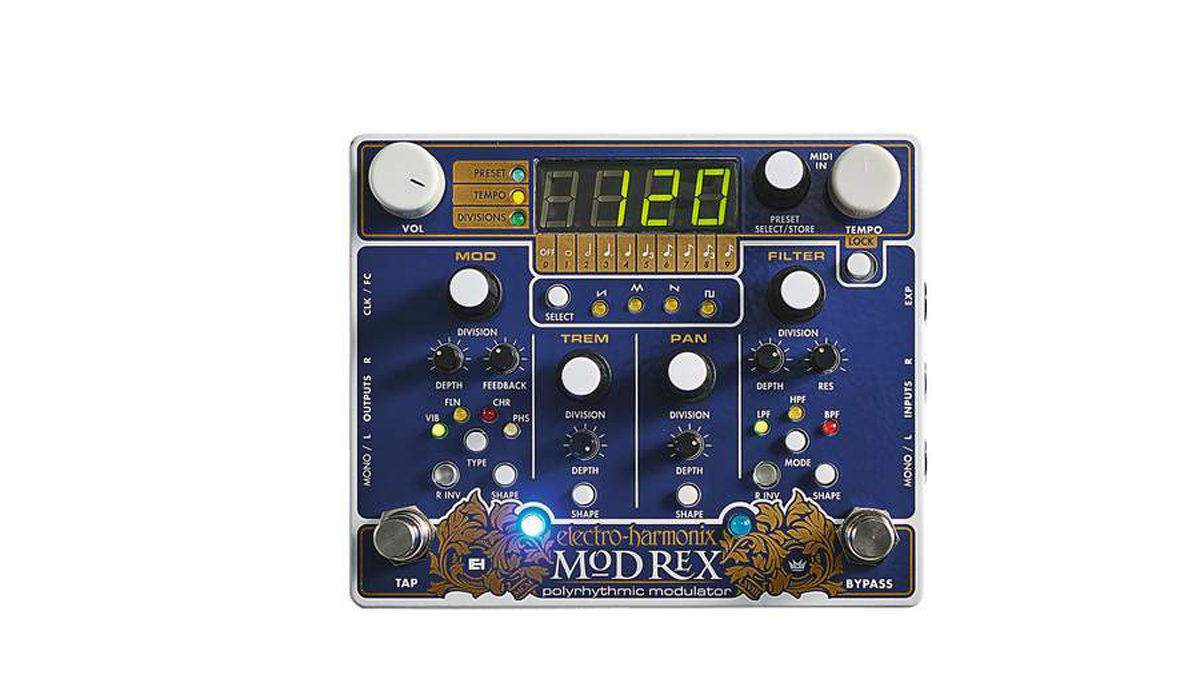MusicRadar Verdict
Focusses on one weakness of chained individual effects: synchronisation. Definitely greater than the sum of its parts.
Pros
- +
Huge range of (poly)rhythmic possibilities.
- +
Good quality individual effects.
- +
Easy to use and integrate on stage and in the studio.
Cons
- -
Damn, those blue LEDs are bright!
MusicRadar's got your back
Mod Rex is not a ’50s sci-fi weapon, though you’d be forgiven for thinking so.
It’s a Polyrhythmic Modulator, with four effects (modulation, filter, tremolo, panning) linked to a single tempo, and its own subdividable LFO with four waveforms: triangle, square up saw and down saw.
Tempo can be set internally, or externally via MIDI and pulse clock. Though initially confusing, the Mod Rex layout quickly becomes familiar, making it easy to get into the nitty-gritty of conjuring modulations, from mild to wild. The two larger modulator blocks (Mod and Filter) flank the more simple Trem and Pan sections.
These latter two possess division and depth knobs and a shape switch. When held down, the shape switch lights up the corresponding waveform above the Trem/Pan section, where the select button toggles the required LFO shape.
Waveform selection is common to all four effects and sits below the tempo subdivision guide, which enumerates each division: 1 for whole note through to 9 for 16th, with 0 indicating effect is off. The LED display shows the four modulator divisions in order, left to right, and it’s easy to get familiar with what those numbers mean rhythmically. The Mod section has the same division, depth and shape controls, augmented by effect type (vibrato, flanger, chorus, phaser), feedback and an R Inv switch.

R Inv inverts the LFO on the right channel in stereo output mode to create wide panned effects. There is plenty of scope for these four delay/pitch modulation effects, and though they aren’t a full match for their single stompbox namesakes, they sound good. The vibrato reaches further into pitchshifting wobble than we’d expected, which is enormous fun.
The filter section is similar, swapping feedback for Res(onance) and the four types for three modes: LPF, HPF and BPF. As with the modulations, these won’t challenge a Mutron III, but they are solid effects. The parameters are sensible and stop shy of self-oscillation. When all four modulated effects march to the same tempo, the results are endlessly creative and sonically pleasing. It can play nice with subtle tremolo and a wee bit of chorus, but ramping up cross-rhythmic accenting with a filter, vibrato, tremolo and stereo panning can really take your sound places it may not have gone before.
The vibrato reaches further into pitchshifting wobble than we’d expected, which is enormous fun
Getting four effects pedals to synchronise is often hard, so EHX have done us all a favour. Adding an expression pedal for spinning around the tempo is all kinds of fun too. By the way, if you’re thinking ‘What use is a panning effect in mono?’, the Pan is another Trem in mono mode - pairing a slow up-saw with a fast square Trem. Cool! So yeah, it’s £229 for some common effects, but what’s uncommon is how the Mod Rex blends them so they have much more in common ie tempo. It’s a neat way to create complex rhythmic effects that are easy to store/recall and sync. Really easy to use too.
“Every note counts and fits perfectly”: Kirk Hammett names his best Metallica solo – and no, it’s not One or Master Of Puppets
Ranked: Bon Iver's albums, from Sable, Fable to For Emma, Forever Ago
“Its mission is simple: unleash the power of any amplifier or line-level source without compromise”: Two Notes promises a “watershed” in tube amp control with the Torpedo Reload II










